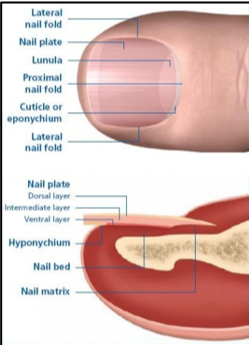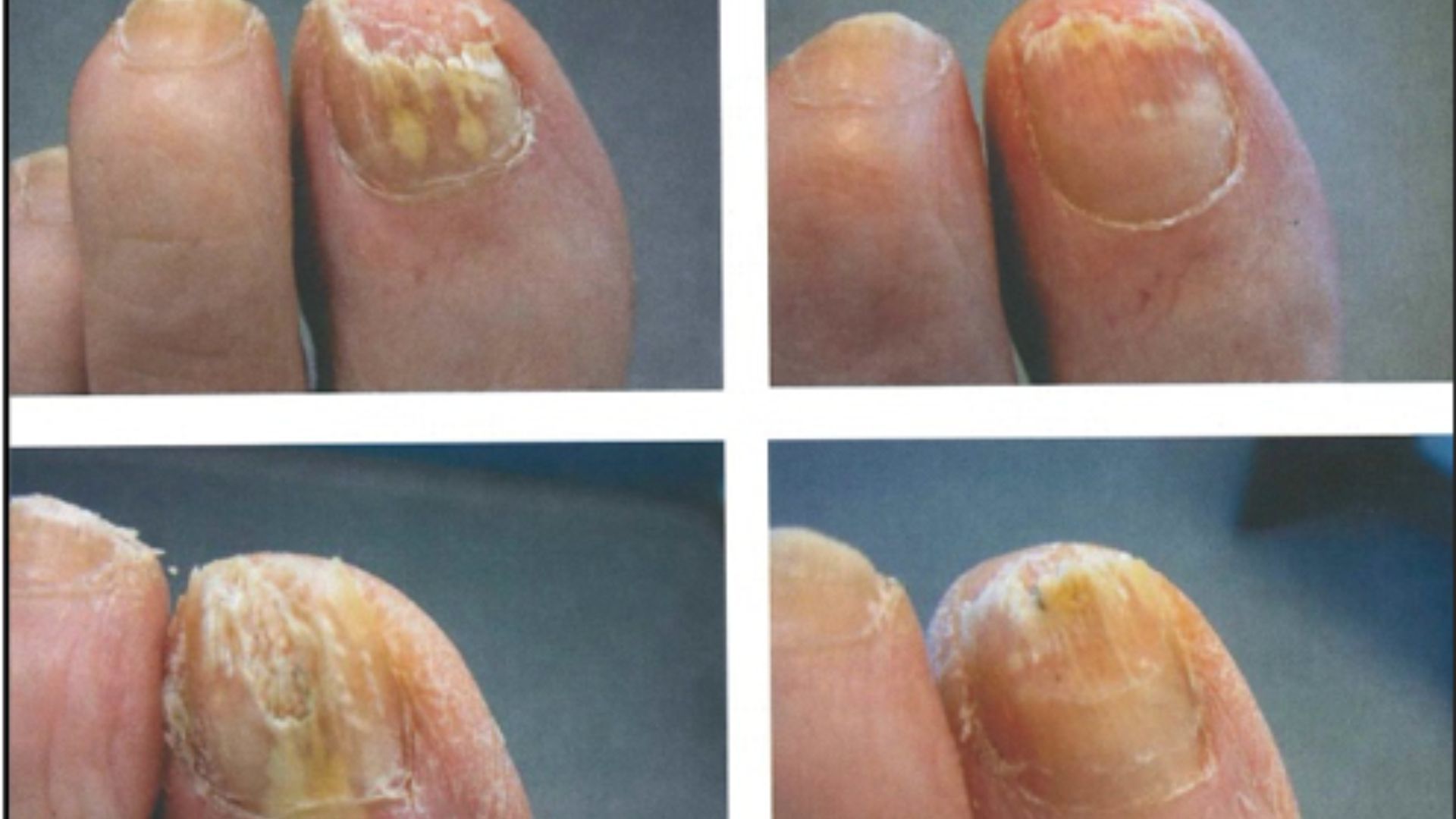
5 min|Dr. Jam Caleda
Integrated Nail Fungal Treatment
Wellness, HealthWhat are onychomycosis and dermatophytosis?

Toenail fungus, or onychomycoses, and athlete’s foot, or dermatophytosis, are fungal infections by groups of organisms called dermatophytes and yeasts. The main difference between the two is that athlete’s foot is an infection of the skin and nail fungus is an infection of the nail itself. Typically athlete’s foot is easier treated than toe fungus.
It is common to have both types of infections, as they are easily spread through repetitive contact with other infected surfaces. They are usually caused by a combination of factors, including repetitive trauma to the toes, re-exposure, genetics, reduced circulation to the feet or a compromised immune system.

Symptoms of athlete’s foot can be itchiness or stinging, cracked or peeling skin in the heels or webbing of the toes, and discoloration of the skin. Symptoms of toenail fungus start as subtle discoloration of the sides of the nail leading it to grow brittle edges.
Advancement of the infection can lead to thickening of the nail. Since many patients with toenail fungus also have athlete’s foot it is common for your doctor to treat both.
Common Pathogens: Photo courtesy of BritaMed Inc.
What to expect during treatment
The initial consultation will consist of a medical history and an initial culture of toenail clippings to be sent for analysis. Please do not clip toenails before an initial consultation as we will collect clippings to send out for analysis.
Treatment sessions will consist of a 45-60 minute appointment where the practitioner will debride (if necessary) thickened nails and then use a laser to destroy any spores that may be in the nail bed.
Debridement uses a medical podiatry drill and is relatively painless, it is common to experience mild heat due to friction with this procedure. Laser treatment uses a diode on the nail bed and is also relatively painless, where someone may expect to feel slightly more heat on the skin.In line with our holistic approach, education, orthopedic adjustments, foot care, and other adjunctive protocols may be recommended to tailor a specific treatment plan that is unique to you as an individual.
For optimal results, it is vital and necessary to continue self-care at home, which includes using a footwear fumigation kit and a topical anti-fungal prescription, all of which will be explained by your doctor.

After an initial series of four mechanical debridement and laser nail fungus treatments performed at two weeks or one-month intervals, typically a 2-3 month break from treatment will be recommended for nail growth. Note that more severe fungal infections may warrant ongoing treatments as prescribed by your doctor.
It is reasonable to expect that nails will not become instantly clear, instead will gradually improve over the months. It can take up to 9-18 months to completely grow out a new set of healthy nails after successful treatment.

Above: Image courtesy of Dr. M. Naran MD (Vancouver). Right: Approx. 5 months apart. Images courtesy of Dr. Coralie Emond DPM (Beauport)
Although there are no absolute contraindications to this treatment, please indicate to your doctor if you have diabetes, diabetic neuropathy, an immunocompromised condition, or are on blood thinners.
Aftercare for Nail Fungal Treatment
Aftercare during treatment is essential to maintain lasting results. It is advisable to purchase an aftercare home kit from the dispensary and fill a topical antifungal prescription which your doctor will give you.
Since many patients have both athlete’s foot and toenail fungus it is important to treat each condition, therefore your doctor may prescribe over the counter or prescription-strength anti-fungal creams for that as well. Failure to eradicate or eliminate athlete’s foot can make it nearly impossible to achieve a lasting cure for nail fungus.
- Begin by washing your feet with soap and water each morning and evening. Dry your feet with a hair dryer then apply the prescribed topical antifungal cream twice daily to affected areas.
- Fumigation of all footwear should be done on a flat surface, out of the reach of children. Use the provided kit, which contains an air-tight 20-gallon plastic zipper bag, a single 4-gram chlorine dioxide tablet, and a fumigation cup. This procedure may be necessary to perform every 4-6 months.
- Fungus spores capable of causing human skin infections may exist on the floor of your bathroom, tub, and shower. We recommend that you regularly spray a bleach solution on dry flooring surfaces (bathroom, tub, shower) to kill fungal spores.
- When undergoing treatment, we ask that you keep something on your feet such as socks or slippers to avoid re-infection. Nail polish should be avoided during treatment as it serves as a nail sealant which inhibits permeability and complete drying of the nail.
- If possible rotate footwear since it takes a full 24 hours to completely dry out a pair of shoes after being worn. Having a pair of shoes that you can alternate wearing on an every other day basis is very helpful.
- If your feet sweat, bring an extra pair of socks with you during your day and switch them out as needed. Natural fibres are best such as cotton, wool, bamboo, or silk.
- Fungus likes darkness, heat, and moisture. Wear open-toed shoes whenever possible. Sunlight and ocean saltwater can also be beneficial.
- Wash socks inside out and bedding in the hottest water setting. Drying in high heat is also recommended. CAUTION: bleach may affect the coloring of clothing, and high heat may cause shrinking of materials.
If you experience worrisome signs or symptoms related to mechanical debridement or laser treatment of your nails, or any other concerns, we ask that you notify us immediately by calling our clinic at (604)-738-1012.
A healthy nail is thin and pink. Successful nail treatment is directly affected by how well you adhere to your at-home care. Your daily efforts are cumulative and will reap benefits down the road.
*Always consult with your health care practitioner before starting any treatment regime*
Related Articles

5 min|Dr. Alex Chan
EBOO for Chronic Inflammation: A Natural Approach for Systemic Relief
Regenerative Medicine, EBOO Therapy
5 min|Dr. Alex Chan
EBOO Therapy for Autoimmune Conditions: Exploring the Potential Benefits
Autoimmune Disease, Regenerative Medicine, EBOO Therapy



